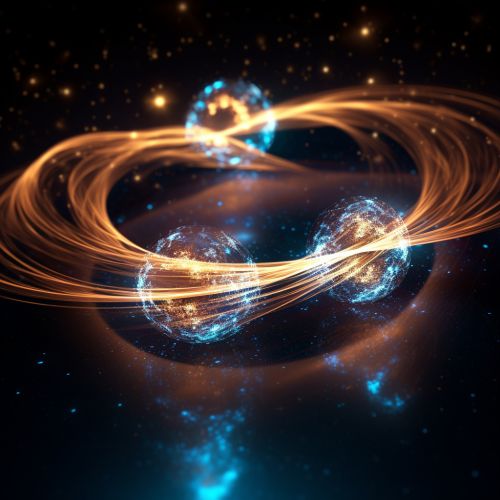Quantum teleportation
Introduction
Quantum teleportation is a method by which quantum information, such as the precise state of an atom or photon, can be transmitted (theoretically) from one location to another. This transmission is facilitated by classical communication and previously shared quantum entanglement between the sender and receiver. It is crucial to understand that quantum teleportation is not a form of classical teleportation, as it does not transport the system itself, nor does it allow for information to be transmitted faster than light.


Quantum Information
Quantum information is distinct from classical information, necessitating a unique form of transmission. Classical information is composed of bits, with each bit being either a 0 or a 1. Quantum information, however, is composed of quantum bits, or qubits. A qubit can be in a state of 0, 1, or any superposition of these, which allows for a greater amount of information to be stored and manipulated.
Quantum Entanglement
Quantum teleportation is heavily reliant on the phenomenon of quantum entanglement. When two particles are entangled, the state of one particle is directly related to the state of the other, regardless of the distance between them. This phenomenon, which Albert Einstein famously referred to as "spooky action at a distance", is a fundamental aspect of quantum mechanics.


Process of Quantum Teleportation
The process of quantum teleportation involves three participants: Alice, Bob, and Charlie. Alice is the sender, Bob is the receiver, and Charlie assists in the process by preparing an entangled pair of particles and sending one to Alice and one to Bob. Alice then performs a Bell state measurement on her particle and the particle she wants to teleport, resulting in two classical bits of information. She sends these bits to Bob, who applies a corresponding transformation to his particle, effectively transforming it into the state Alice intended to teleport.
Applications of Quantum Teleportation
While quantum teleportation is still largely theoretical, it has potential applications in the field of quantum computing and quantum communication. It could allow for the creation of highly secure communication channels, as any attempt to intercept the communication would alter the state of the qubits and be easily detected. It could also be used in quantum computing to move qubits within a quantum computer.


Challenges and Limitations
Despite its potential, quantum teleportation faces several challenges. The process requires a high degree of precision and control over quantum states, which is difficult to achieve with current technology. Additionally, quantum teleportation requires a shared entangled state between the sender and receiver, which can be difficult to maintain over long distances. Finally, the no-cloning theorem of quantum mechanics states that it is impossible to create an exact copy of an arbitrary unknown quantum state, which limits the ability to repeat or verify the teleportation process.
